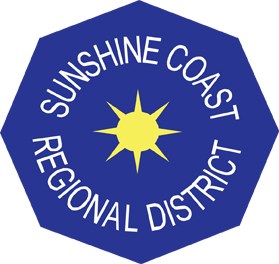Water availability in Edwards and Chapman lakes, which feed the Chapman watershed, dipped below 30 per cent when Stage 4 water restrictions were in effect this summer, and the siphoning system was deployed for two weeks.
Sunshine Coast Regional District (SCRD) staff shared that and other information about the state of the Chapman Regional Water System at a Sept. 20 infrastructure committee meeting.
As dictated by board policy, the siphon was deployed only after Stage 4 was declared, which this year was Aug. 31. Restrictions returned to Stage 2 two weeks later after several days of rain replenished the lakes. Staff showed that daily water demand was significantly higher than the targets set for Stage 2, 3 and 4, though use did drop successively with each stage.
West Howe Sound director Ian Winn commented that since targets were being consistently missed, the community wasn’t “necessarily engaging in a time-sensitive manner,” and suggested staff factor that lapse in when deciding when to declare Stage 4. He also said there could be improvements to enforcement, referring specifically to the Town of Gibsons, which uses Chapman system water for Zone 3.
Gibsons director Jeremy Valeriote said enforcement was completed at a commercial operation and “could probably be more prompt in the future.” In a follow-up email, Gibsons CAO Emanuel Machado confirmed that a carwash facility on Gibsons Way was issued a Compliance Order on Aug. 24, during Stage 3.
He wrote that staff attended the site on Sept. 7 after no action was taken by the operator, at which point the owner agreed to shut down the carwash. Machado also confirmed that no fines were issued to any properties during Stage 3 and 4. SCRD CAO Janette Loveys told Coast Reporter that SCRD staff issued 40 Notice of Infraction letters and issued one ticket during Stages 2, 3 and 4, compared with 30 letters and no fines in 2017.
Gray Creek and Chaster Well, which form part of the Chapman Regional Water System, provided about 20 per cent of the total water supply during Stage 4. Staff also said that test wells will be drilled by Sept. 30, with testing expected to take place in early October.
During the discussion following the presentation, infrastructure manager Remko Rosenboom said Edwards Lake was used as a primary water source for users on the Chapman system for several days prior to Stage 4 restrictions, and that at that time “there was no flow to Chapman Lake.” He confirmed that they were still able to meet the environmental flow needs of Chapman Creek, which is 200 litres per second.
Staff confirmed that a park use permit and water licence are expected in spring 2019. Permit changes for Tetrahedron Provincial Park are required before construction can begin for the Chapman Lake drawdown project.
Directors also sought clarity on the use of temporary siphons in Chapman Lake. When Halfmoon Bay director Garry Nohr asked what happens if the province declines to change the status of the park, Loveys said, “We understand from BC Parks that if the project does not go ahead that they will be faced with a decision around the siphon and at this point, every indication is that as a statutory decision maker they would not approve an ongoing use of a siphon.” Loveys said that claim has not been put into writing but was verbally shared at an open house.
A motion was carried, raised by Roberts Creek director Mark Lebbell, for staff to provide a report analyzing the financial, operational and health and safety implications of continuing with regular extended use of a siphon. The report will also look at legal and regulatory factors involved in obtaining permits for long-term siphon use.
Questions were also raised around the raw water reservoir project. A feasibility study is underway and staff estimated that it would be complete in 2019, and that the construction of the reservoir won’t start for at least six years, with a projected completion date of 2026 or 2027.
Following the presentation, SCRD chair Bruce Milne said directors were told in the spring that the feasibility study was going to be coming in 2018. Loveys responded that if prepared in time, the report would come before the board in December in 2018 and would still be included in 2019 budget deliberations. “I think our timelines are still in that window and are not slipping,” she said.
A review of the SCRD’s bulk water agreement with the Town of Gibsons is expected in October and a review and update of the drought management plan and approval of a water sourcing policy are expected in the spring of 2019.



